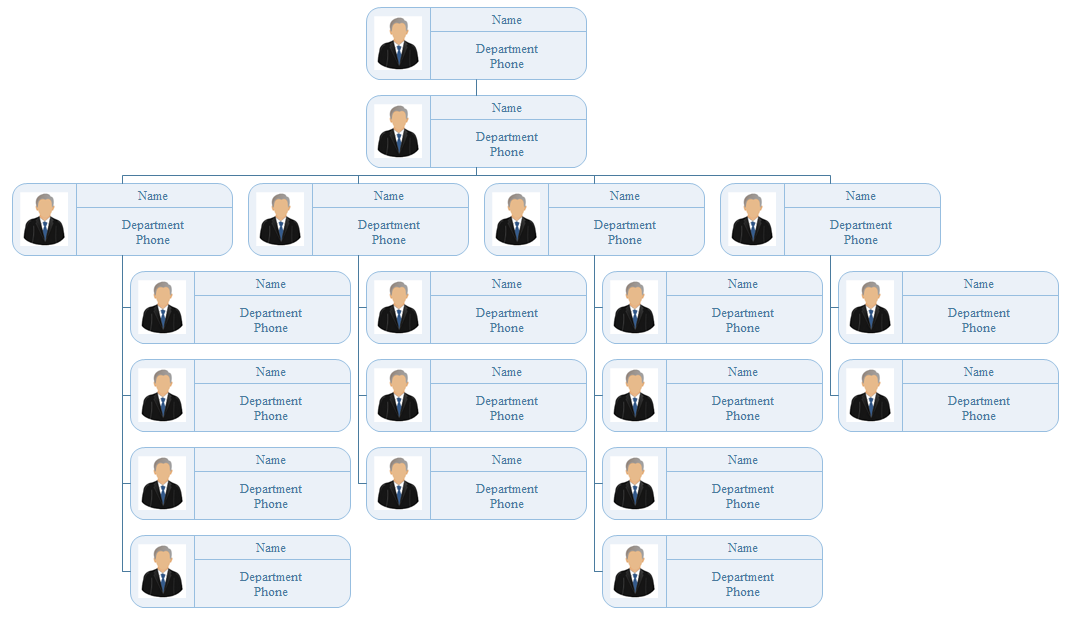An org chart graphically depicts the internal structure and hierarchies of an organization. It enables one to visualize the roles, relative ranks and the relationships between individuals. It’s also called organizational chart or organigram.
What does it look like?
Org charts usually use the inverted tree structure, with small boxes representing employees and lines connecting the boxes. The boxes will be filled with staff information such as their name, department, position, etc. The horizontal lines connect employees with the same level, and the vertical lines indicate the reporting relationship between a superior and the subordinate.
What to include on an org chart?
An organizational chart can be used to show the structure of an organization as a whole or broken down by division or unit. It will include information on the individuals, which you may add their basic information such as name, age, position, department, team, and photo, depending on your own requirements.

What are the types of organizational charts?
In general, there are three types of organizational chart: hierarchical, flat (horizontal), and matrix.
- A hierarchical structure is the most common style, usually with many layers. The topper layer depicts people with a higher ranking and the layer below comes with their subordinates.
- A flat or horizontal structure has fewer layers and is usually used to depict employees with the same level.
- A matrix structure looks like a swim lane flowchart. It’s more complicated because it adds x-axis columns as the function units. This kind of org chart is especially useful when you need to illustrate project driven structures because the chart is both cross-functional and span departments.
What’re the benefits?
- First, an org chart allows new employees to understand who they report to and who to contact when there is a problem.
- Second, it helps managers manage the workload. With an org chart, it’s clear to see how many employees are under a certain department, or how many units a manager need to take charge of.
- Third, with an org chart, it’s easy to see the promotion channels and promote the optimum allocation of staff.

